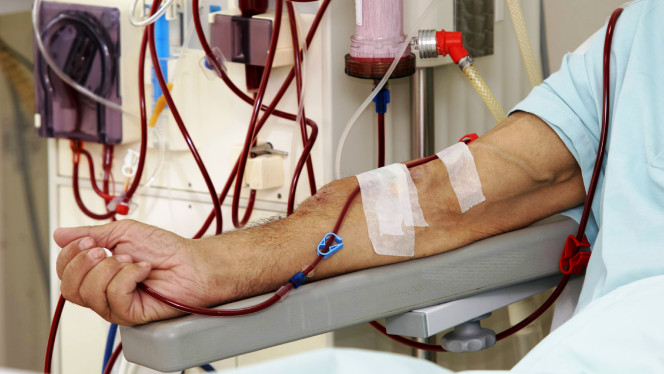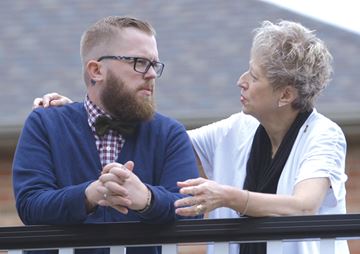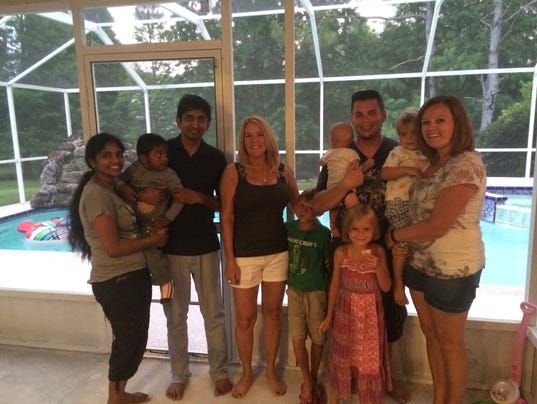From The Current, University of California, Santa Barbara, by Julie Cohen


For the 12 million people worldwide who suffer from polycystic kidney disease (PKD), an inherited disorder with no known cure, a new treatment option may be on the horizon.
PKD is a condition in which clusters of benign cysts develop within the kidneys. They vary in size, and as they accumulate more and more fluid, they can become very large. Among the common complications of PKD are high blood pressure and kidney failure.
Now, Thomas Weimbs, a professor in UC Santa Barbara’s Department of Molecular, Cellular, and Developmental Biology, has developed a novel strategy for targeting therapeutic antibodies to polycystic kidneys. He notes that the strategy opens up the possibility of repurposing a large number of existing drugs for PKD therapy.
Therapeutic antibodies — a class of biologics — are already being used extensively to treat a variety of diseases from cancer to autoimmune disorders. These biologic therapies use an antibody class called immunoglobulin-G (IgG) to bind to and prevent the activity of specific proteins or growth factors. However, in PKD, the growth factors shown to promote cyst growth reside in fluid trapped in the interior space of a cyst, called a lumen, to which IgG antibodies have no access.
Weimbs and his team have found a method that enables another class of antibodies, immunoglobulin-A (IgA), to penetrate the cyst wall. The researchers’ results appear in the Journal of Biological Chemistry. [Read more]
From Nature
From Zawya, Kuwait
Polycystic kidney disease (PKD) is a genetic disorder where fluid filled cysts grow in kidneys and destroy normal renal tissue. It is the world's most common inherited kidney disease affecting between 1 in 400 and 1 in 1000 people worldwide - around 12.5 million individuals. A rarer form of the disease, which occurs in about one in every 20,000 live births in the UK, leads to a third of these babies dying before or just after birth.
Treatment for the condition has traditionally targeted proteins which are thought to play a role in causing the condition and are located in hair-like structures and tissue that line the inside of cysts. These treatments can help alleviate some of the symptoms of PKD but they can't currently cure the condition.
Researchers have now discovered that the blood and lymphatic system surrounding cysts may also be important in the development of the condition and could be a new target for treating the disease.
By looking at mouse models of both the common and rarer form of the disease, the team noticed that tiny blood vessels surrounding the cysts were altered very early in cyst development. They therefore treated the mice with a potent 'growth factor' protein called VEGFC, and found that patterns of blood vessels normalised and the function of the kidneys improved. In the mice with the rare form of the condition, it also led to a modest but significant increase in lifespan.
David Long, lead researcher and Principal Research Associate at the ICH, explains: "With further testing, treatments that target blood vessels surrounding the kidney cysts, perhaps in combination with currently used drugs, may prove to be beneficial for patients with polycystic kidney disease."
Adrian Woolf, Professor of Paediatric Science at the University of Manchester and co-author of the study added: "If we could target these blood vessels early in the development of the condition it could potentially lead to much better outcomes for patients."
Elaine Davies, Research Director at Kidney Research UK and Dr Richard Trompeter, Chairman of Kids Kidney Research, said: "This is an exciting piece of work we are extremely proud to be supporting. By identifying a treatment plan that can prevent further deterioration of kidney function in patients with this particular disease, our researchers have given fresh hope to thousands of people in the UK with this kidney condition. However, research like this can only continue with the support of the public."
Living With PKD: Dialysis
From MedicalXpress
"If you are a person with kidney failure in Texas you're in trouble, but if you're in New England you're golden, and that's profoundly troubling because the quality of care shouldn't be predicated on your ZIP code," says senior investigator Mahmoud Malas, M.D., M.H.S., an associate professor of surgery at the Johns Hopkins University School of Medicine.
A report on the findings, published online June 24 in JAMA Surgery, maps out the geographic gaps in end-stage kidney care and—researchers believe for the first time—quantifies the difference in death risk stemming from such regional disparities.
Tracking nearly 465,000 people with end-stage kidney disease who started dialysis in the United States between 2006 and 2011, Malas and team found that the likelihood of getting the right kind of dialysis access ranged from 11 to 22 percent, depending on where a person lived, a disparity that added up to as much as 30 percent difference in risk of dying.
In addition, the analysis showed that no region met the target rate of treating at least half of its patients with the recommended form of dialysis, one done by creating a surgical access in the patient's arm by stitching an artery to a vein. This method, known as AV fistula, makes it far less likely that a patient will develop life-threatening bloodstream infections and blood clots.
Other forms of dialysis—those that involve accessing a patient's bloodstream through a catheter in the chest or via the abdomen—carry a notably higher risk of deadly complications, Malas and team say.
Dialysis is a life-sustaining therapy that cleans a person's blood once a patient's kidneys can no longer do so. A decade-old initiative, Fistula First, developed by professional societies and federal agencies calls for at least half of all patients with kidney failure to get their first dialysis using this approach.
Overall, New England and the Pacific Northwest had the highest scores, with one in five patients getting fistula-based dialysis. Florida, Texas and Southern California had the lowest scores, with slightly more than one in nine patients receiving fistula-based treatment. Not surprisingly, the researchers note, mortality and survival followed the same geographic pattern, with patients in the high-scoring areas having a nearly 30 percent lower risk of dying, on average, compared with those in the bottom-scoring regions.
"Dialysis with an AV fistula is superior to other methods and offers a dramatic survival advantage," says lead author Devin Zarkowsky, M.D., who conducted the research as a surgery resident at Johns Hopkins and is now a chief resident at the Dartmouth-Hitchcock Medical Center in New Hampshire. "The fact that fewer than one in five people start dialysis with a fistula is a real public health concern." [Read more]







